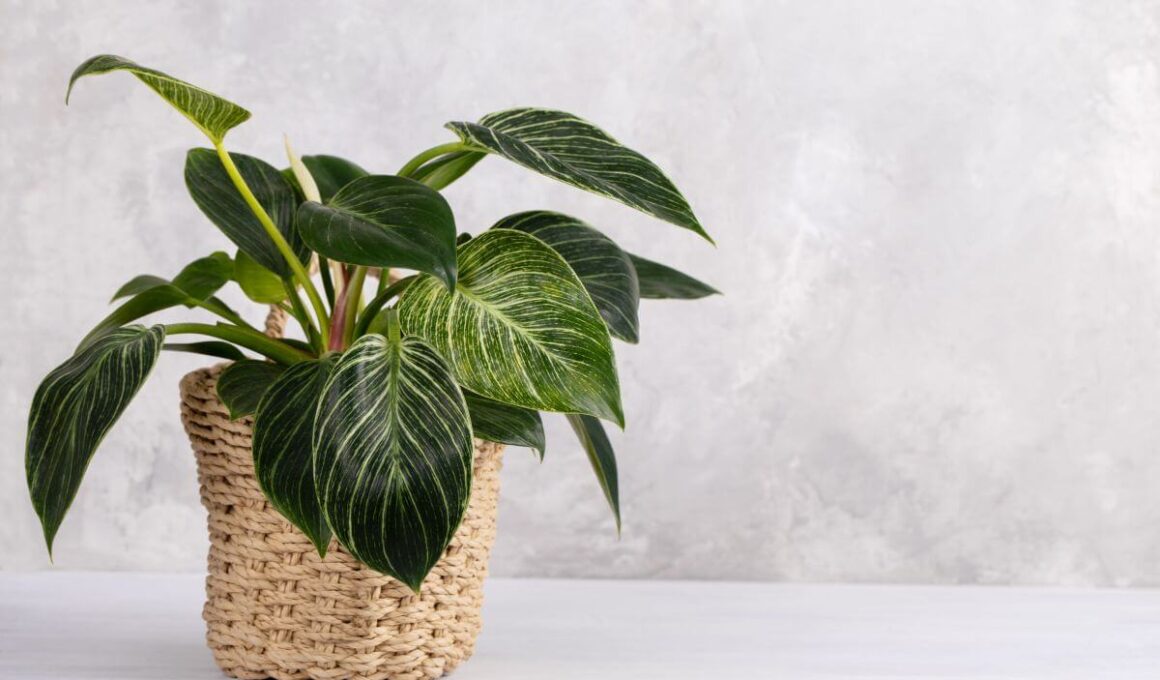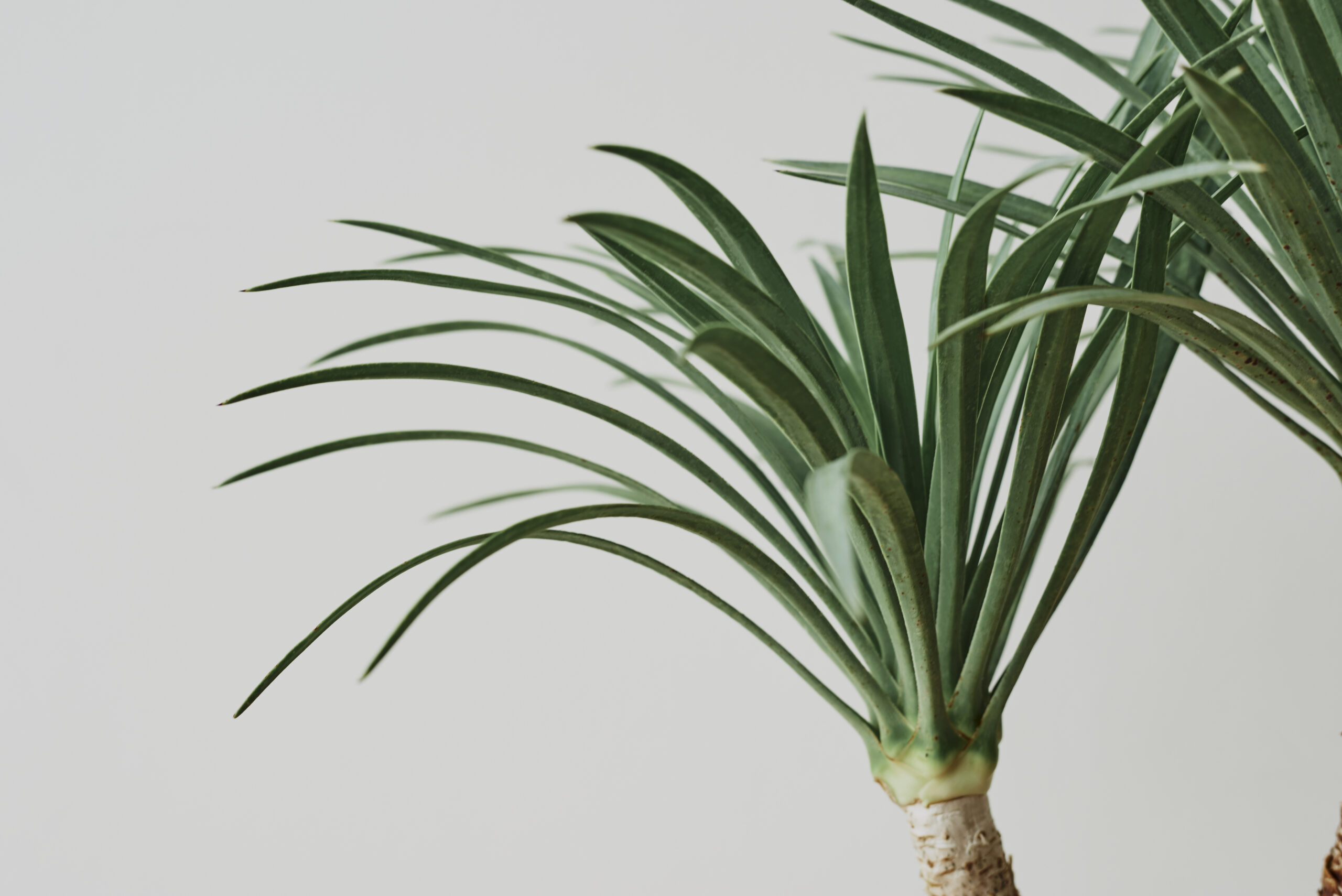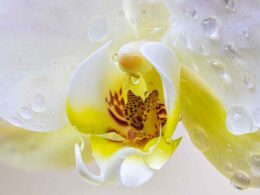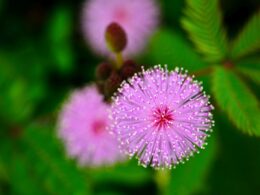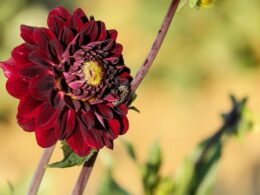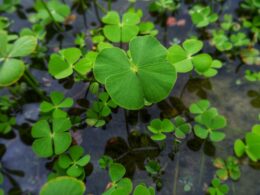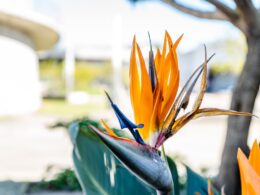What Is Philodendron Birkin? Origin and Characteristics
Before we get into birkin plant care, let’s establish what the plant actually is. It’s a common name for Philodendron ‘Birkin,’ which is a man-made plant hybrid. It was created by crossing two other philodendron varieties, although it’s not sure which ones.
One theory is that it originated as a spontaneous mutation of Philodendron ‘Rojo Congo,’ which is a hybrid of Philodendron ‘Imperial Red’ and Philodendron tatei. The other possibility is that the birkin plant was developed by crossing the ‘Rojo Congo’ variety with the species Philodendron tatei.
The result is an evergreen plant with glossy, heart-shaped leaves. The variegated leaves are dark green with lighter green stripes running along the veins. They can grow up to 8 inches long, and the plant also produces small, insignificant white flowers.
Philodendron Birkin Plant Care – Soil Type and Fertilization
The first step in birkin plant care is choosing the right soil type. This plant prefers rich soil that retains moisture but drains well. A mix of 25% sphagnum moss, 25% perlite and 50% potting soil will do the trick. The pH should be slightly acidic to neutral.
As for fertilization, birkin plants don’t need a lot because they’re slow-growing. Use a balanced fertilizer once a month during the spring and summer, and stop fertilizing in the winter. You can also use slow-release pellets or organic compost.
Philodendron Birkin Plant Care – Watering Needs
The most important aspect of birkin plant care is keeping the soil moist throughout spring and summer. This means you may need to water it more than once a week during the warmest months. However, these plants don’t like to sit in soggy soil, so make sure you’re not overwatering. It’s better to err on the side of too little water than too much.
In the winter, the plants go dormant, so you can cut back on watering. Once a week or every two weeks should be enough.
What water you use is also important. Always use filtered or distilled water, as Philodendron ‘Birkin’ is sensitive to the chemicals in tap water.
How Much Light Birkin Plants Need
Philodendron ‘Birkin’ descends from jungle plants, which means it’s adapted to growing in the shade of trees. It prefers bright, indirect light, so it’s best placed on a windowsill. It can also tolerate low light, but its green leaves will lose their stripes.
If you live in a particularly dark home, you may need to supplement with grow lights. Just be careful not to put your plant in direct sunlight, as this can scorch the leaves.
Ideal Temperatures and Humidity Levels for Birkin Plants
This philodendron plant likes temperatures between 65 and 85 degrees Fahrenheit. It can tolerate a brief drop to 50 degrees, but anything lower than that will damage the leaves. If you live in a cool climate, growing your birkin plant indoors is the best option.
As for humidity, these plants like it on the high side. If the air in your home is particularly dry, you can mist the leaves or set the plant on a pebble tray. Just make sure the pot isn’t sitting in water, as this can lead to root rot.
Pruning Philodendron Birkin Plants
Pruning is an important part of birkin plant care, as it helps the plant to grow fuller and prevents leggy growth. You can prune birkins at any time of year. Just use sharp, sterile shears to snip off any yellow or dead leaves. You can also cut back leggy stems in spring or fall to encourage the plant to grow sideways.
How to Propagate Birkin Plants
You can easily propagate birkin plants in the summer – the best method of propagation is by stem cuttings. Here’s how to do it!
- Choose a stem with the most leaves.
- Cut a part of the stem with at least a couple of leaves.
- Remove the bottom leaves to expose a section of the stem.
- Dip the cut end of the stem in rooting hormone (this is optional).
- Fill a small pot or glass with moistened potting mix (aroid soil is best) and insert the stem.
- Put the container in a humid spot with indirect light and wait for the plant to take root.
Rooting should take 2-3 weeks. Once the plant has developed a good root system, you can transplant it to a pot of its own.
Repotting Philodendron Birkin Plants
You’ll only need to repot birkin plants every few years, or not at all if you keep them on the larger size. These plants grow slowly, so they don’t need a lot of space. If you do repot, choose a pot that’s only one size larger than the current one.
Common Problems with Birkin Plants
The most common problem with birkin plants is root rot, which is caused by excess water. These plants like to be moist but not soggy, so make sure the pot has drainage holes, and be careful not to overwater.
Yellow leaves are usually a sign of too much direct sunlight. Move your plant to a shadier spot and see if the plant looks better after a few weeks.
If the leaves start to drop off, it’s usually a sign of too little water or too much fertilizer. Check your watering and fertilizing schedule. Wuth correct birkin plant care, these tropical plants will thrive and grow lush foliage.
Philodendron Birkin Plant Toxicity
Like many tropical houseplants, Philodendron ‘Birkin’ is toxic to both humans and pets. The leaves contain insoluble calcium oxalate crystals, which can cause burning and irritation if they come into contact with skin. If ingested, these plants can cause vomiting, diarrhea and difficulty breathing.
Now that you know all about birkin plant care, it’s time to get one of your own! These beautiful plants make a great addition to any indoor jungle. Just be sure to give them the care they need, and you’ll have a happy, healthy plant for many growing seasons. Happy gardening!





